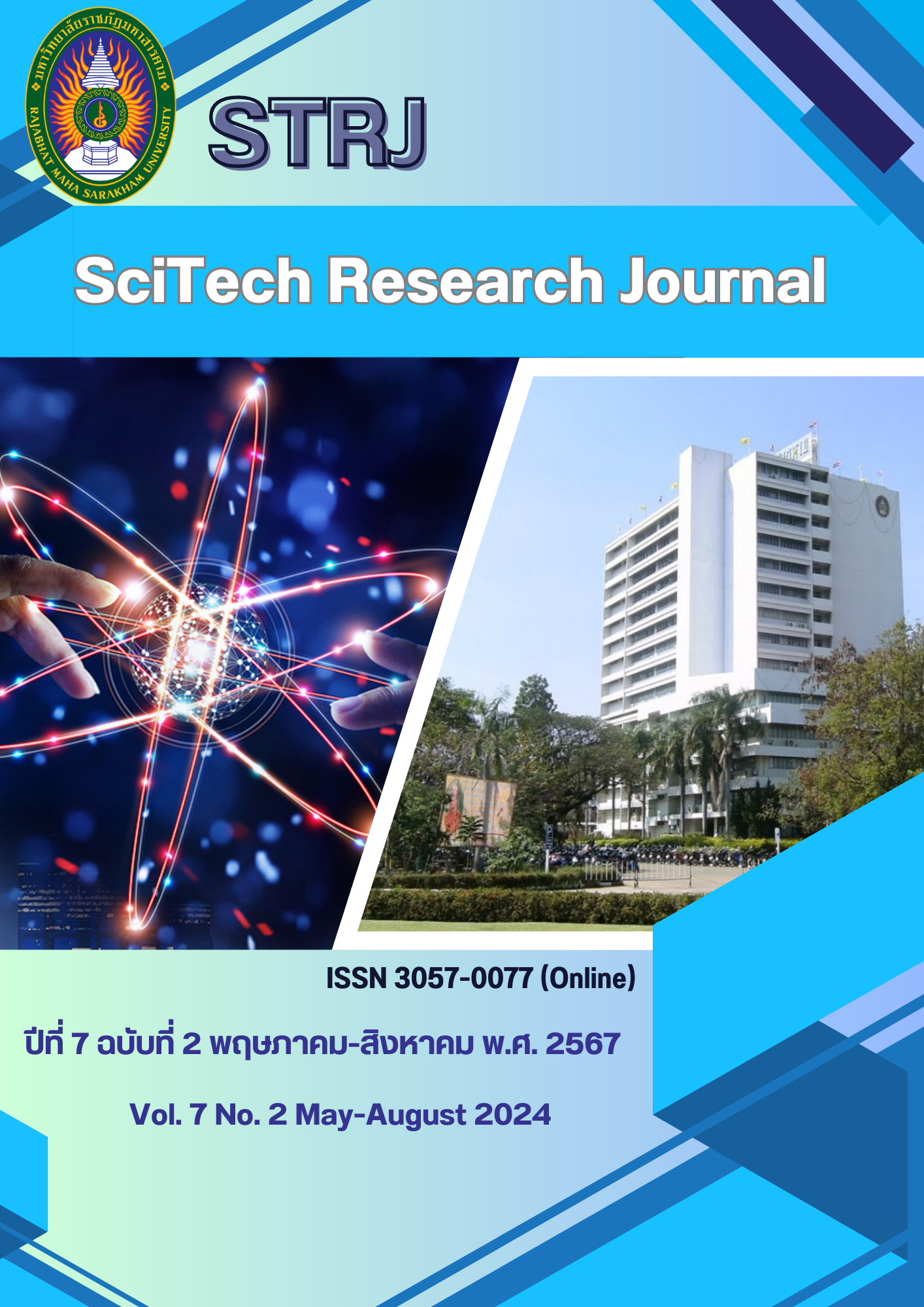Development of Mixing Ratios of Alumina and Silica on Physical Properties of Glazes by Comparing with the Ancient Glaze from the Kiln Source in Mueang District, Lampang Province
Keywords:
Glaze, Feldspar, Ancient KilnAbstract
This research aimed to study the mixing ratios of alumina and silica on physical properties of ancient glaze for ceramic products. The experiment started with the Seger formula containing primary groups of 0.27-mole Feldspar (KNaO·Al2O3·6SiO2), 0.41mole Calcium carbonate (CaCO3), 0.16mole Magnesium carbonate (MgCO3) and 0.16-mole Zinc oxide (ZnO), the media group of 0.48 – 0.52mole Aluminum oxide (Al2O3) and acid group of 2.8 – 3.6 mole Silicon dioxide (SiO2). The glaze was used in ground forms (ground for 4 hours) as an additive in the Seger formula for firing at
1200 °C. The first step's firing condition is neutral firing to an oxidation atmosphere to maximum temperature and soaking at the highest temperature for 15 minutes.
The appearance of ancient glaze in formulas 1, 2, and 6 has a clear texture, good melting, flow less, and no cracking. The glaze formula can be applied to the oxidation firing process in the shuttle kiln.
References
Aranyapak, S. (2010). Principles of Ceramic Glazes. Bangkok: Chulalongkorn University Press.
Chawalawan, S. (2006). Ceramics. Bangkok: Odeonstore Printing Co., Ltd.
Ingsiriwat, P. (1994). Ceramic Glaze Formulas Total. Bangkok: Odeonstore Printing Co., Ltd.
Janusz, P., Maciej, S., Magdalena, L., Katarzyna, G. & Piotr, J. (2015). The effect of SiO2/Al2O3 ratio on the structure and microstructure of the glazes from SiO2–Al2O3–CaO–MgO–Na2O–K2O system. Journal of Spectrochimica Acta Part A: Molecular and Biomolecular Spectroscopy, 134, 621 – 630.
Kosiyapun, S. (1993). Glaze for pottery. Bangkok: Thai WattanaPanich Printing Co., Ltd.
Laurent, C., Ludovic, D., Benoit, B. & Valérie, M. (2021). Vitrification, crystallization behavior, and structure of zinc aluminosilicate glasses. Journal of Non-Crystalline Solids, 555, 120609.
Michael, O.A. (2021). Physicochemical analyses of feldspar ceramic glazes produced with borax and potash. International Journal of Advances in Engineering and Management, 3(7), 2326 – 2331.
Phromphik, T. (1980). Introduction of Ceramic. Bangkok: Odeonstore Printing Co., Ltd.
Sawangphon, A. (2000). Raw materials widely used in ceramics. Bangkok: Odeonstore Printing Co., Ltd.
Tamonwat, H., Thitima, K., Soravich, M., Siwat, L., Chontanat, S., Anurak, A., Paweena, N., Kattiya, K., Sirima, A., Narathip, W., Winai, T. & Supakorn, T. (2021). Development of household ceramic entrepreneurs with a new identity from Culture Capital of Lampang Province. (Research Report). Lampang: Lampang Rajabhat University.
Tumtong, T. (2022). Development and History of Lampang Pottery. Chiang Mai: Charoenwat Printing Co., Ltd.
Tumtong, T. (2024). The source of the Ban Pa Hiang pottery kiln is Wang Nuea Subdistrict. Retrieved from https://www.lampangculture.com/a3-view.php?id=6



